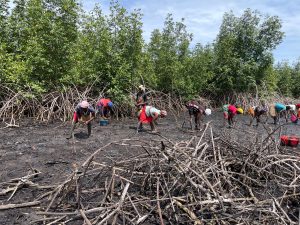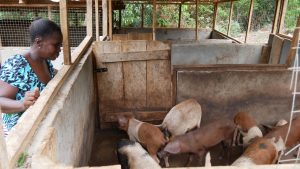As Sierra Leone braces itself to kick-start oil exploration and production activities anytime in the near future in identified areas in the country, expectations of high socio-economic boom are rife in all walks of life, particularly across the political spectrum. This is so because a number of countries have availed themselves in varying forms of tender options in an effort to capture a portion of the limited oil investment now available. These activities however, do not go without grave attendant environmental consequences. The marine coastal environment and communities nearby, stand to be adversely affected by such activities.
In a bid to mitigate the negative impacts of imminent oil pollution on the marine coastal environment and nearby communities, Conservation Society of Sierra Leone (CSSL), with funds from MAVA Foundation through the Regional Partnership for Conservation of the Coastal and Marine Zone in Africa (PRCM), has begun holding a range of engagement meetings with relevant key stakeholders to chart the way forward for a lasting solution. In one of such engagements, the organization brought together about 50 representatives from a number of MDAs, civil society organizations and the media on June 27, 2019 in Freetown. In that engagement, relevant key actors were mapped out to provide the required support for coordinated efforts for a successful public awareness and sensitization drive around the hazards of offshore oil and gas activities on coastal marine environment in the country.
During the engagement, speaker after speaker delivered statements of commitment from their respective institutions in support of the project. Samuel Kamara, a staff from the Environment Protection Agency (EPA) noted that, they had developed a State of the Marine Environment report in 2014 and Coastal Marine Oil Sensitivity Mapping in 2015. He said, the EPA would continue to work with the Ministry of Fisheries and Marine Resources and the Maritime Agency for a Coastal Management Planning and Marine Vulnerability Analysis. Joseph Sandy who manages Strategic Engagement at the Petroleum Directorate, stated that, oil exploration actually started in 1982 to 1985 until its renewed emphasis in 2012, noting that the various interruptions were caused by the war in Sierra Leone and other geographic and global realities. “The Petroleum Directorate is keen to reduce environmental impact and will not support any form of exploration that is not cleared by the Environmental Impact Assessment process”, Mr. Sandy assured all participants. He reaffirmed his Directorate’s open door policy and steadfastness to monitor the conformity of all future oil exploration, with international standards. Furthermore, the Executive Director of the Reptiles and Amphibians Program, Edward Aruna, reflected on the already existing threat of oil spillage from artisanal fishermen and industrial trawlers. He appealed in the interest of sea turtles and other marine life to make use of the collaboration and research already in existence, to conserve sea animals.
In order to conduct the mapping proper, participants were tasked to present their institutions’ operational objectives as they relate to advocacy work to reduce impacts of oil and gas pollution on marine environment and community livelihoods. The relevant institutions were afterwards mapped with clear roles for support in the project.
Within such a wide array of stakeholders, there was much discussion around the target communities and the best way to engage them. However, the Project Coordinator, Abdul K. Dumbuya ascertained that based on the successful institutional mapping of roles and responsibilities, all relevant stakeholders would be involved in a likely second project phase to support civil society to undertake awareness raising around the potential threats of oil and gas exploration.



